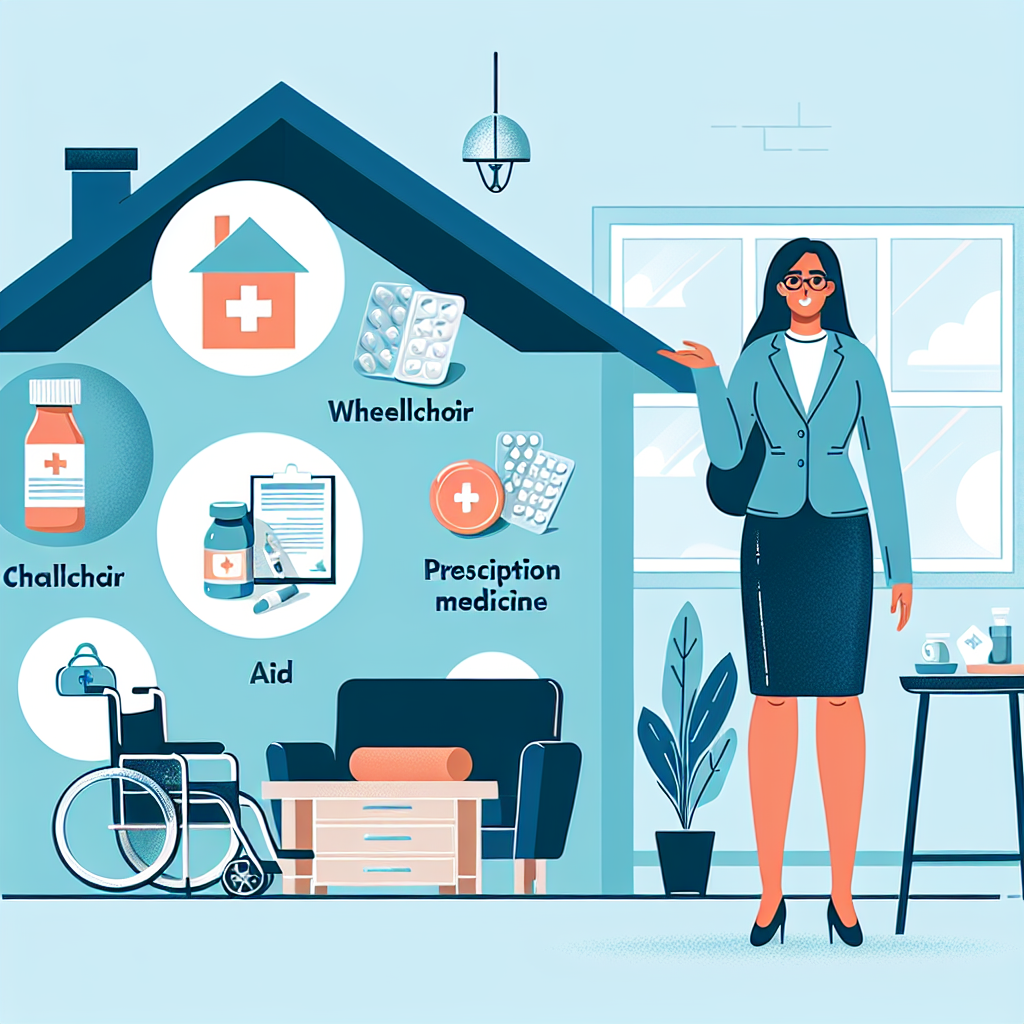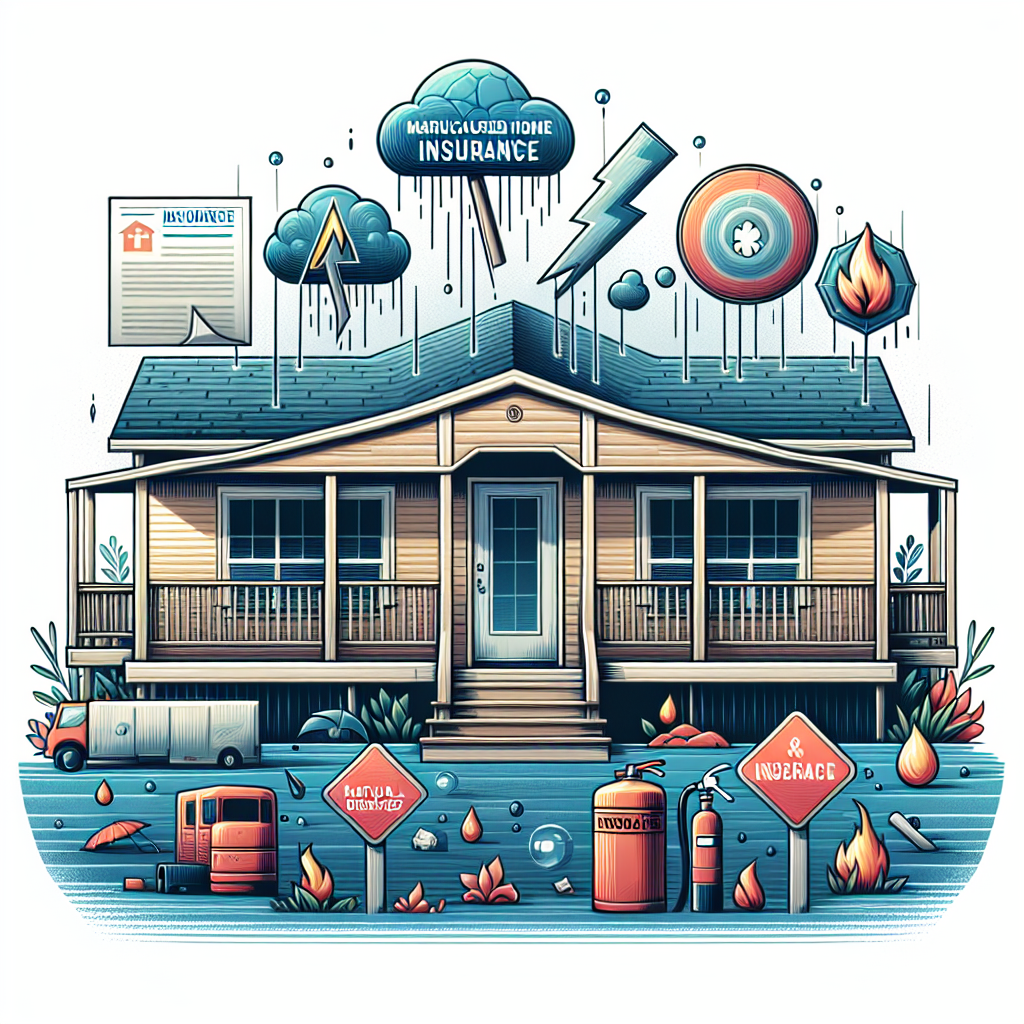Filed under Home Insurance on
In Home Care Insurance Coverage Guide: What Is Covered

Your parent wants to keep living at home, but you’re staring down a maze of benefit rules, acronyms, and fine print. What exactly gets paid for, who authorizes it, and how do you avoid surprise bills? This is where a clear, practical In Home Care Insurance Coverage Guide: What Is Covered can make all the difference. Below, you’ll find a straightforward explanation of what insurers typically include, how rules differ across Medicare, Medicaid, long-term care insurance, and VA programs, and how to document needs so claims get approved the first time.
What counts as in-home care
In-home care is an umbrella term for services delivered where you live to help you stay safe, independent, and medically stable. The specific services that qualify for coverage will depend on the payer. Broadly, in-home care includes two categories: skilled care (clinically necessary and delivered by licensed clinicians) and personal or custodial care (help with daily activities). Many care plans combine both.
- Skilled nursing: Wound care, injections, medication management, disease monitoring, IV therapy, and health education.
- Therapies: Physical, occupational, and speech-language therapy for rehabilitation, mobility, and function.
- Home health aide: Assistance with bathing, dressing, toileting, and basic health tasks under nurse supervision.
- Personal care attendants: Help with activities of daily living (ADLs) such as eating, bathing, dressing, toileting, transferring, and continence; and instrumental ADLs (IADLs) like meal prep and light housekeeping.
- Homemaker and companion services: Grocery shopping, laundry, meal preparation, and safety supervision.
- Respite care: Short-term relief for family caregivers through temporary support hours.
- Hospice and palliative care: Comfort-focused support for serious illness, symptom management, and family support.
- DME and supplies: Durable medical equipment such as walkers, wheelchairs, hospital beds, and certain wound supplies.
- Care coordination and caregiver training: Education and planning to ensure consistent, safe care at home.
Insurers distinguish in-home personal care from home health (a Medicare term for intermittent, skilled clinical services ordered by a physician). That distinction shapes what is covered and for how long.
Why an In Home Care Insurance Coverage Guide: What Is Covered matters
Coverage for home-based services varies widely by insurer, plan type, state rules, and clinical criteria. An organized approach prevents delays and denials. A practical In Home Care Insurance Coverage Guide: What Is Covered helps you match needs to benefits, request the right authorizations, and time services to get the most out of available hours.
- Clarity: Know the difference between medical necessity vs. convenience and how that affects coverage.
- Documentation: Capture the exact language and evidence plans expect, such as ADL impairment and safety risks.
- Cost control: Align services with covered benefits before out-of-pocket hours start.
- Continuity: Plan for transitions (hospital to home) to prevent gaps that derail recovery.
What in-home care insurance typically covers
Most payers cover care that is medically necessary, evidence-based, and tied to functional need. The In Home Care Insurance Coverage Guide: What Is Covered below separates common inclusions by category. Always verify with the specific plan because frequency limits, provider networks, and prior authorization rules can change.
Skilled and medically necessary care
- Home health episodes: Intermittent skilled nursing and therapies, usually after a hospital or rehab stay or following a new diagnosis. Requires a physician order and a plan of care.
- Therapy services: PT/OT/ST to restore function, teach safe transfers, and improve communication or swallowing.
- Telehealth and remote monitoring: Increasingly covered to track vitals, reinforce self-management, and reduce hospitalizations.
- DME and supplies: Covered when deemed medically necessary; often subject to copays or coinsurance.
Personal care and custodial support
- Home health aides: Covered when tied to a skilled plan of care under certain programs.
- Personal care attendants: Covered primarily through Medicaid waivers, certain Medicare Advantage supplemental benefits, and long-term care insurance policies.
- Homemaker services: Coverage varies; more likely under Medicaid waivers, VA programs, and some Medicare Advantage plans.
Ancillary and caregiver support
- Respite: Short-term relief for family caregivers through allotted hours or respite days.
- Caregiver training: Education and skill-building to safely assist with transfers, medication routines, or feeding.
- Care coordination: Case management and care planning to synchronize services.
- Transportation and meals: Sometimes included as supplemental benefits for chronic illness management.
What usually is not covered
- 24/7 home care long-term under health insurance. Ongoing custodial care is typically not covered by traditional health insurance.
- Non-medical housekeeping when not tied to functional impairment or safety risk.
- Unskilled companion services under Medicare Original; these may be available via other programs.
- Cosmetic or convenience home modifications; some medically necessary modifications may be covered by Medicaid waivers or VA programs with limits.
- Private-duty nursing without a documented medical necessity and authorization.
Who pays for what: program-by-program breakdown
Medicare (Original Medicare Part A and B)
Original Medicare pays for intermittent home health services when strict criteria are met. You must be under a physician’s care, have a plan of care, and need part-time skilled nursing or therapy. Historically, beneficiaries also had to be “homebound,” meaning leaving home requires considerable effort or assistance. When criteria are met, Medicare covers skilled nursing, therapy, and limited home health aide support tied to the skilled plan. It does not cover long-term personal care or round-the-clock support.
- Covered: Skilled nursing, PT/OT/ST, medical social work, limited aide services, certain DME (usually 80% after Part B deductible).
- Not covered: Ongoing custodial care, housekeeping, or 24-hour care.
- Hospice: When electing hospice under Part A, Medicare covers comprehensive interdisciplinary services focused on comfort and caregiver support, including certain supplies and equipment.
Pro tip: For home health, ensure a timely face-to-face encounter note in the chart, a detailed plan of care, and documentation of why services must be delivered at home. This is a central element in any In Home Care Insurance Coverage Guide: What Is Covered.
Medicare Advantage (Part C)
Medicare Advantage plans must cover what Original Medicare covers for home health. In addition, many plans now offer supplemental benefits for non-medical in-home supports, such as meal delivery, personal care, and caregiver training. These benefits expanded in recent years for members with chronic conditions, but they vary significantly by plan and region. Expect prior authorization, network rules, and service limits.
- Potential supplemental benefits: Personal care hours, home-delivered meals, transportation, pest control for health reasons, and bathroom safety devices.
- Requirements: Diagnosed chronic condition, documentation of functional impairment, use of in-network providers, and prior authorization.
Ask member services for the plan’s medical policy on in-home supports and the current authorization workflow. Plans frequently update these benefits, so a fresh In Home Care Insurance Coverage Guide: What Is Covered helps keep families aligned with the latest criteria.
Medicaid and Home- and Community-Based Services (HCBS)
Medicaid is the primary payer for long-term services and supports in the United States, including personal care at home. Coverage is state-specific and often delivered through waivers or managed care organizations. Services can include personal care attendants, homemaker support, respite, adult day health, home modifications, and care coordination.
- Eligibility: Income and asset limits, medical level-of-care criteria, and often an assessment documenting ADL/IADL needs.
- Benefits: Flexible personal care hours, consumer-directed programs to hire a family caregiver, respite allotments, and home safety modifications.
- Considerations: Waiting lists in some states, Electronic Visit Verification (EVV) requirements, and care plans that specify authorized hours.
Document functional need clearly (for example, assistance with bathing and transfers seven days a week, risk of falls, cognitive impairment affecting sequencing). For many families, the most practical In Home Care Insurance Coverage Guide: What Is Covered includes a step-by-step path to a Medicaid HCBS assessment and tips to prepare for it.
Long-term care (LTC) insurance
Private long-term care insurance is designed to pay for custodial care at home, in assisted living, or in a nursing facility. Policies vary widely, but most require impairment in two or more ADLs or a qualifying cognitive impairment to trigger benefits.
- Key features: Daily or monthly benefit maximum, benefit period (e.g., three to five years or a total benefit bank), and an elimination period (a waiting period before payments begin).
- Documentation: Licensed provider plan of care, assessment confirming ADL deficits, and invoices meeting policy requirements.
- Optional riders: Inflation protection, shared care for couples, and waiver of premium after a qualifying event.
Tip: Start the claim early, even during the elimination period, and verify whether the policy reimburses you or pays the agency directly. Keep detailed care logs and caregiver timesheets; this level of specificity is a hallmark of a strong In Home Care Insurance Coverage Guide: What Is Covered.
Employer or individual health insurance
Traditional health plans may cover home-based skilled services after a hospitalization or surgery, such as wound care or home infusion, but rarely cover ongoing personal care. Prior authorization and network rules generally apply. Short-term post-acute support (for example, therapy for a few weeks) is more commonly covered than long-term daily assistance.
Veterans Health Administration and VA benefits
Veterans may access generous in-home services through several VA programs, depending on eligibility, service connection, clinical need, and local availability.
- Homemaker/Home Health Aide: Personal care and homemaker services to support ADLs.
- Skilled Home Health and Home-Based Primary Care: Clinical care for complex needs delivered at home.
- Veteran-Directed Care: A budget to hire and manage personal care workers, often including family members.
- Aid and Attendance: A pension add-on that helps pay for care when the veteran or surviving spouse meets certain criteria.
Work with the VA social worker to coordinate benefits. Some services may have copays based on priority group. Policies and capacity vary by VA medical center.
PACE and other integrated models
The Program of All-Inclusive Care for the Elderly (PACE) integrates Medicare and Medicaid benefits and provides comprehensive medical, social, and long-term services including adult day health and in-home support. Participants receive coordinated care with transportation, therapies, and personal care bundled together. Enrollment is limited to service areas, and there are eligibility requirements around nursing-home level of care and age.
Documentation and eligibility: how to qualify faster
Coverage hinges on evidence. The more clearly you describe needs and risks, the easier it is for payers to approve services. Follow these steps to build a strong case.
- Get a physician order: Ask for a detailed order that specifies diagnosis, functional limitations, and why services must be delivered at home.
- Create a plan of care: Include measurable goals, frequency and duration of visits, and who will provide services.
- Record ADL and IADL deficits: Keep a two-week log of assistance needed with bathing, dressing, toileting, transfers, meal prep, and medication management.
- Note safety risks: Falls, wandering, confusion, pressure-injury risk, or low health literacy—link them to the requested services.
- Compile supporting reports: Hospital discharge summaries, therapy evaluations, and cognitive assessments.
- Confirm network status and authorizations: Ensure your agency and clinicians are in-network and obtain prior approval.
- Schedule the initial assessment: For Medicaid HCBS and many MA plans, an assessment triggers the authorized hours.
Common documents include a face-to-face encounter note for Medicare home health, OASIS assessments for agencies, therapy evaluations, and caregiver training plans. Keep a shared folder so the whole care team can update it. A practical In Home Care Insurance Coverage Guide: What Is Covered relies on well-organized paperwork.
Claims, billing, and avoiding denials
- Verify benefits before services: Ask specifically about visit limits, hourly caps, and whether personal care is included.
- Get prior authorization: Lack of authorization is a leading cause of denials.
- Use precise medical necessity language: Tie requests to diagnoses, risks, and functional goals.
- Document every visit: Date, time, duration, tasks performed, patient response, and clinician signature.
- Use correct codes: Therapies often use CPT codes; DME uses HCPCS. Modifiers and units must match documentation.
- Meet timely filing limits: Submit claims within the payer’s deadline to avoid automatic denials.
- Appeal promptly: If denied, request the reason in writing, supply additional evidence, and escalate within the allowed timeframe.
Costs and budgeting for in-home care
Even with coverage, families often pay something out of pocket—especially for ongoing personal care. National surveys consistently show home care remains one of the most cost-effective long-term support options, but prices vary by region and caregiver shortage pressures.
- Hourly rates: Industry data in recent years places median hourly costs around the low-to-mid $30s for home health aides and high $20s to low $30s for homemaker services, with higher rates in metro areas.
- Visit-based billing: Skilled nursing or therapy visits may be billed per visit under health insurance with copays or coinsurance.
- DME copays: Many items are covered at 80% under Medicare Part B after the deductible; secondary insurance may cover the rest.
Ways to stretch benefits and reduce out-of-pocket costs include stacking programs (e.g., Medicare for skilled care and Medicaid for personal care), using consumer-directed Medicaid options to pay a family caregiver, and reviewing tax strategies. Medical expenses above certain thresholds may be tax-deductible; consult a tax professional to align documentation with IRS rules.
Trends to watch in 2024–2025
- Medicare Advantage growth in home supports: Plans are continuing to experiment with flexible supplemental benefits for chronic conditions, including personal care hours, meals, and caregiver support.
- Caregiver training coverage: Policy updates have increased attention on reimbursing structured caregiver education delivered by clinicians, improving safety and reducing readmissions.
- Telehealth and remote monitoring: Extended flexibilities through 2025 have kept remote services viable, especially for therapy follow-ups and chronic disease management.
- Medicaid HCBS investment: Many states are expanding home- and community-based services to reduce institutional care reliance, though workforce shortages remain a challenge.
- Hospital-at-home programs: Health systems are scaling acute care at home models, which can integrate with post-acute home health and personal care across the continuum.
These shifts reinforce the need for an up-to-date In Home Care Insurance Coverage Guide: What Is Covered, as benefits and qualifiers can change year to year.
How to choose an agency and protect yourself
- Licensing and accreditation: Confirm state licensing and look for accreditation by recognized bodies for quality assurance.
- Caregiver screening: Ask about background checks, training, supervision, and backup staffing policies.
- Plan of care transparency: You should receive a written plan with goals, visit frequency, and contact information for escalation.
- Communication: Expect regular updates, care notes, and easy ways to adjust schedules or report concerns.
- Contracts and billing: Review cancellation policies, minimum shift lengths, and who bills whom (you, insurance, or both).
- Fit: Consider cultural and language preferences, caregiver continuity, and experience with your diagnosis.
Frequently asked questions
How many hours per week will insurance cover?
It depends on the payer and your documented needs. Medicare home health does not authorize “hours” of custodial care; it covers intermittent skilled services. Medicaid waivers may authorize a set number of personal care hours per week based on an assessment. Long-term care insurance pays up to a daily or monthly maximum. Always request the assessment criteria and target your documentation to those measures.
Can a family member get paid as a caregiver?
Under many Medicaid consumer-directed programs and some VA options, yes. Long-term care insurance may also reimburse family caregivers if the policy allows. Medicare does not typically pay family caregivers for custodial support. Check whether your state requires specific training or a fiscal intermediary for payroll.
Does insurance cover housekeeping and meal prep?
Sometimes. Medicaid waivers and some Medicare Advantage plans include homemaker services when essential to health and safety. Original Medicare generally does not cover housekeeping as a standalone service. Long-term care insurance may reimburse if you meet benefit triggers and the tasks are part of an approved plan of care.
Are home modifications covered?
Medicaid waivers and VA programs may cover medically necessary modifications like grab bars, ramps, or bathroom safety equipment up to certain limits. Health insurance typically excludes structural modifications, but may cover DME like shower chairs or commodes with a physician order. Document the fall risk or functional limitation to support the request.
What’s the difference between home health and home care?
Home health is clinical and intermittent, ordered by a physician and covered by Medicare and other insurers when medically necessary. Home care generally means personal or custodial assistance with ADLs and IADLs; it is covered by Medicaid waivers, VA programs, and long-term care insurance, and sometimes by Medicare Advantage as a supplemental benefit.
Action checklist
- Map needs: List ADL/IADL challenges and safety concerns with real examples from the past two weeks.
- Gather records: Physician notes, hospital discharge summaries, therapy evaluations, and medication lists.
- Call your plan: Ask what home health, personal care, respite, and DME benefits are available and what requires prior authorization.
- Choose providers: Verify network status, ask about experience with your diagnosis, and request sample care notes.
- Prepare for assessments: Have your logs and examples ready; be specific about frequency and duration of needed help.
- Confirm approvals: Get authorizations in writing with start and end dates, frequency, and any copays.
- Track services: Keep a calendar of visits, hours used, and outcomes to support renewals or appeals.
- Review annually: Benefits, premiums, and needs change—update your plan each year or after major health events.
Putting it all together
Navigating home-based benefits is part detective work, part advocacy. Start with your goals for safety and independence, translate those goals into functional documentation, and align services with the right payer at the right time. Use this In Home Care Insurance Coverage Guide: What Is Covered to identify which program best fits your situation, what evidence each requires, and how to keep approvals moving. With a solid plan, you can reduce red tape, control costs, and build a support system that helps your loved one thrive at home.
If you need a quick reminder: verify eligibility, write a detailed plan of care, document functional limitations, secure authorizations before services start, and keep meticulous records. When in doubt, ask your plan for its written policy on home-based supports and refer back to this In Home Care Insurance Coverage Guide: What Is Covered to ensure your requests hit every mark.
Finally, remember that benefits evolve. Revisit this In Home Care Insurance Coverage Guide: What Is Covered after any hospitalization, diagnosis change, or annual plan renewal. Small updates in rules or documentation can unlock meaningful hours of support—and make home the safest, most comfortable place to heal and live.





